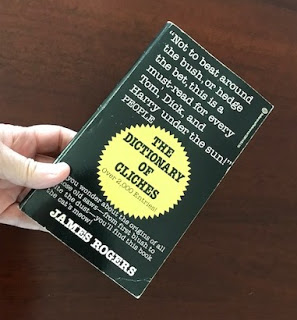
This blog posts on Mondays. Second Mondays of the month I devote to my writing workshop students and anyone else interested in creative writing. Welcome!
> For the archive of workshop posts click here.
In most of the manuscripts I’ve seen in writers workshops, the characters… sort of… ummm… float kinda sorta in space? When they do appear more concretely, their bodies, gestures, physical interactions with other bodies and things tend to be generic, e.g., the tall black man stood; the short blonde woman was sitting; the Asian man nodded. She looked. He shrugged.
It gets kind cardboard-cutout-y.
Oh, and these characters also do a lot of taking sips of drinks.
Well, OK, sometimes a character’s black or Asian or blonde or whatever, and he or she or zhe’s gotta stand and/or nod and/or shrug and/or take a sip. But it isn’t gain-of-function research to grab a floccule more oomph from the Vividness Department. Take just a moment to dig around there in your imagination—and this could, literally, cost you less than 20 seconds in some instances— and then, with your thoughtfully selected detail (or two or three), you can guide your reader to see your characters and the scene with more specificity, that is to say, more vividly.
(But what about clutter? You might hasten to ask. I do the whack-a-mole on clutter here. )
How to come up with vivid detail? One of the best ways to get click-your-fingers fast with vivid detail is to read as a writer. Reading as writer is not the same as reading passively, for entertainment. Nor is it reading to bag some trophy-worthy-theme as for your PhD thesis on race, class, gender & intersectionality, but rather, simply, when you spot something you—you the fellow literary artist— think an author does especially well, take note. I would suggest that you check it or circle it or underline it (or all three) with your pencil and, should you feel so moved, copy it out in your notebook. Then, perhaps take another moment to try some permutation exercises.
Recently I was reading Bernard DeVoto’s The Western Paradox when this struck me:
“We headed toward Flagstaff from Bakersfield. In August the lower end of the San Joaquin Valley is wrapped in a brown heat-haze which I have never fully understood, for assuredly there is no water vapor in it. A reek of crude oil goes with it; the sky is a steel-white; one does not rest a forearm on the car door.“
—Bernard DeVoto, The Western Paradox (p. 195)
Rest a forearm on the car door—Bingo! Dear writerly reader, is this not by a league more vivid in your mind than, say, “it was a really hot day”? We’re no longer kinda sorta floating around; we are in a body— a body with a forearm that avoids resting on the car door!
As I went on to read Willa Cather’s novels My Ántonia and O Pioneers! I kept an eye out for how she handles bodies— not only in how she makes the characters more vivid and/or grounds them in the scene, but has them relate physically to each other. (And I would wager that any author whose work you especially admire and enjoy reading is doing this splendidly well— else you wouldn’t be bothering to read them and so admiringly. So I would suggest that you go to your own bookshelf of books you have already read and loved, and reread one or two with an eye to how these authors handle detail relating to the body.)
Cather never disappoints.
“As Ántonia turned over the pictures the young Cuzaks stood behind her chair, looking over her shoulder with interested faces. Nina and Jan, after trying to see round the taller ones, quietly brought a chair, climbed up on it, ansd stood close together, looking. The little boy forgot his shyness and grinned delightedly when familiar faces came into view. In the group about Ántonia I was conscious of a kind of physical harmony. They leaned this way and that, and were not afraid to touch each other. ..”
—Willa Cather, My Ántonia
“Three three pretty young Swedish girls who did Alexandra’s housework were cutting pies, refilling coffee cups, placing platters of bread and meat and potatoes upon the red tablecloth, and continually getting in each other’s way between the table and the stove.”
—Willa Cather, O Pioneers!
“Frank went into the house and threw himself on the sofa, his face to the wall, his clenched fist on his hip. Marie, having seen her guests off, came in and put her hand coaxingly on his shoulder.”
—Willa Cather, O Pioneers!
She put her hand on his arm. “I needed you terribly when it happened, Carl. I cried for you at night”
….
Carl pressed her hand in silence.
—Willa Cather, O Pioneers!
“Emil rubbed his knees thoughtfully”
—Willa Cather, O Pioneers!
And from some random other reading:
“But it is true that a lot of work gets done over two-hour ceremonial luncheons, and more than once, after such an occasion, I wobbled out like a stunned ox, vowing to change jobs before I acquired gout and a faintly British accent.”
— Michael Collins, Carrying the Fire: An Astronaut’s Journeys
By the side of this fortress-door hung a heavy iron bell-pull, ending in a mermaid. When first Mrs. Lucas had that installed, it was a bell-pull in the sense that an extremely athletic man could, if he used both hands and planted both feet firmly, cause it to move, so that a huge bronze bell swung in the servants’ passage and eventually gave tongue (if the athlete continued pulling) with vibrations so sonorous that the whitewash from the ceiling fell down in flakes.”
—E.F. Benson, Queen Lucia
*
A WEE WRITING EXERCISE
As one character is speaking, what else can another character do besides, say, “rub his knees thoughtfully”? Oh, plenty! Here goes:
Joe slowly rubbed his elbow.
Elmira dabbed a finger under eye, as if to remove a fleck of mascara that wasn’t there.
Patsy slipped both hands, palms out, into her back pockets.
Lou took up his cup of tea and then, with a nearly inaudible sigh, leaned sideways into the pillows.
A wee exercise: To this list, add 5 more examples of your own and use the names Puddleton, Jamilla and Fred (because I say so). Absolut Verboten: nodding, sitting, standing, looking, shrugging and sipping.
For more exercises, see Giant Golden Buddha & 364 More Free Five Minute Writing Exercises.
I welcome your courteous comments which, should you feel so moved, you can email to me here.

From The Writer’s Carousel: Literary Travel Writing
Q & A with Solveig Eggerz on Sigga of Reykjavik
The Marfa Mondays Podcast is Back! No. 21:
“Great Power in One: Miss Charles Emily Wilson”





